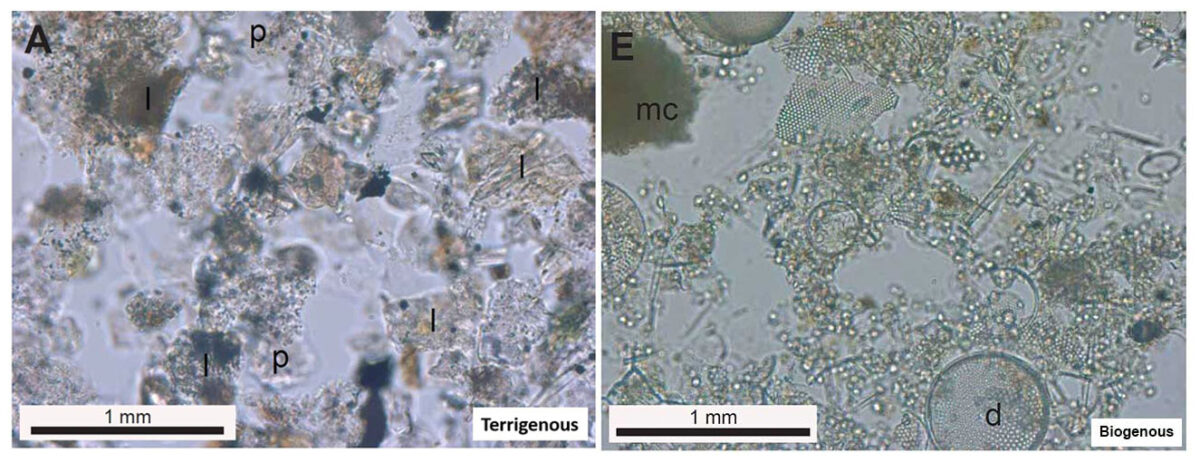Concept
Scientific observations can be made directly with our own senses or may be made indirectly through the use of tools.

By Liselle Persad
One might think all sand looks the same. Tiny, messy, a bit darker on this part of the beach, lighter over there. But that’s just what you can see with your naked eye. As part of my research into the geologic processes shaping the seafloor in the Gulf of California, I’ve been looking at a lot of sand, and I can tell you, it’s a whole world to itself. Observing and describing samples are integral parts of studying fine-grained sedimentary rocks, but can’t be done with the eye alone. Instead, we use a petrographic microscope, a tool specifically designed to study rocks and minerals. Thin sections (i.e., slices) are made from site samples using sieved sediment to be analyzed with the microscope. The shape, degree of roundness, color in plane-polarized and cross-polarized light (which tells us the mineral thickness and distinguishes it from other minerals), as well as the thickness of minerals all work collectively to give an idea of the source and lifespan of the rocks in thin section.
Terrigenous sediments come from the land, forming through terrestrial weathering processes, and are composed of small particles from weathered rock and volcanic activity. Wind and other mechanisms then carry these particles to the ocean where they sink. Terrigenous deposits contain small percentages of heavy minerals such as garnet and zircon. These are valuable industrial minerals found in sand, silt, and clay and can give us an idea about the sources of sediment on land. Biogenic sediments come from aquatic environments and form from the remnants of living things that were not dissolved in the ocean water. This includes bones, teeth, and the shells of organisms like clams, shrimp, and plankton. Identifying the sometimes-extinct species these came from (especially in the case of diatoms, radiolarians, and foraminifera) can indicate the age of sediments. But the first step in learning about the age and source of these sediments is recognizing that sand has a story to tell — one that we can only hear by using microscopes and other tools to supercharge our own senses and boost our observational powers.
